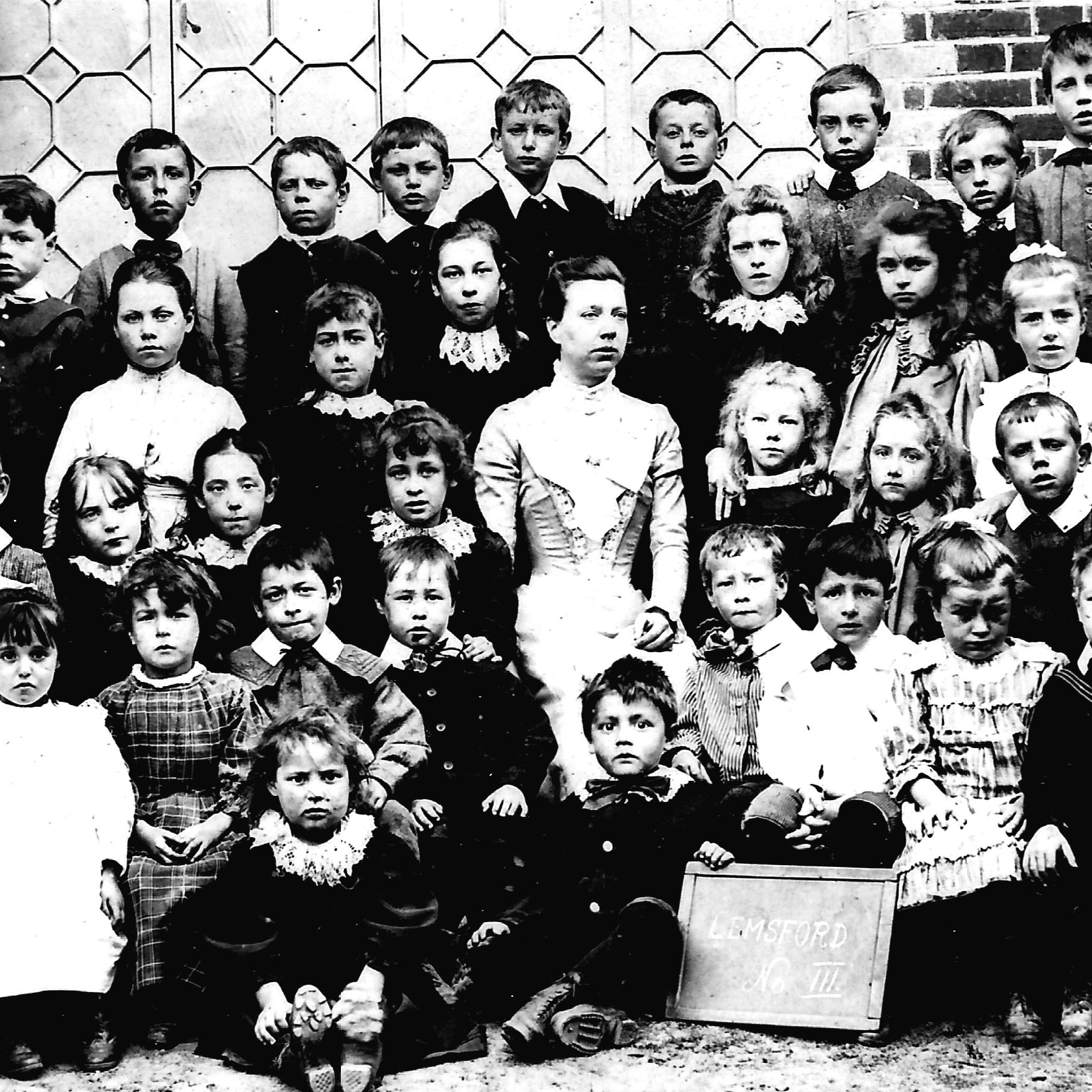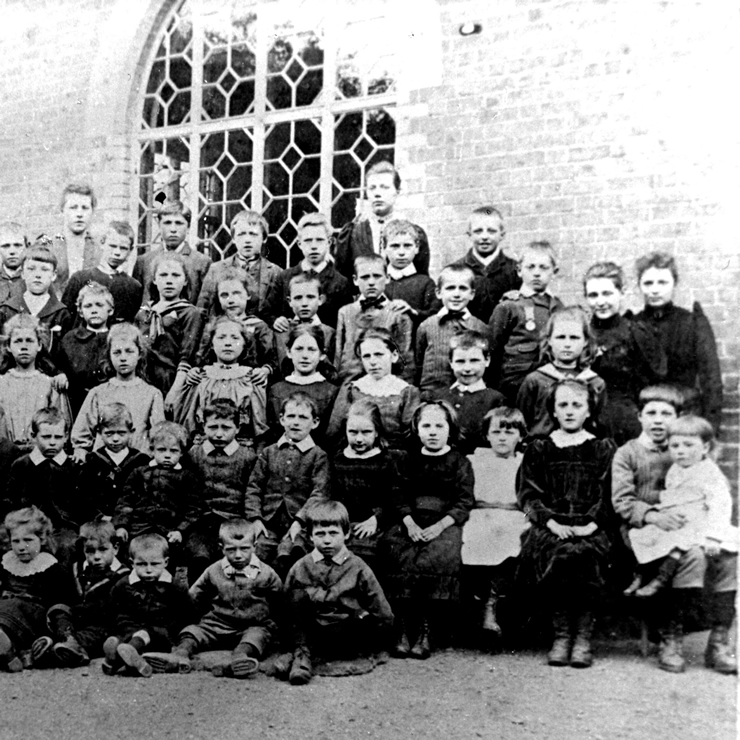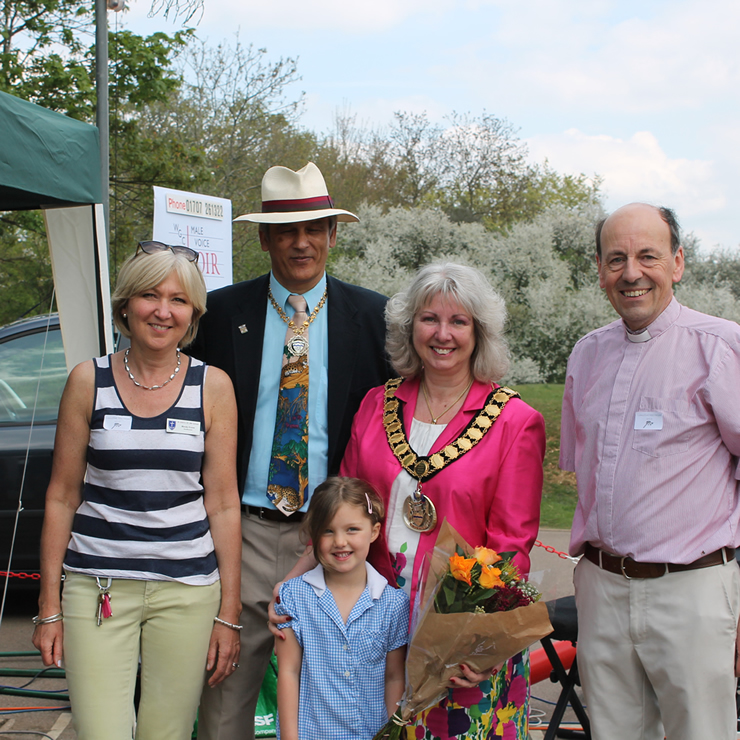TL2020
The Education Act of 1870 required provision be made for all children to have the opportunity for an education. Prior to this date few children, other than those from wealthy families, were able to attend any type of school. On the 4th March 1872, the first entry in the Head Teacher’s Log Book was made by Mrs Mary Seaman, the first Head Teacher. On that day, seventy-seven children, ranging in age from three to thirteen, were enrolled. They were divided into two classes - one being taken by Mrs Seaman and the other by her husband Walter, her assistant. They were all taught in one room, the room now used as the dining room in the oldest part of the school. The school was approved by the Government on the 16th May 1872.
This page examines the life of Margret (Pugh) Killick. Admission Number:2317
Margret (Pugh) Killick attended St Johns from Sep 10 1945 to July 25 1952
Date of Birth:Sep 21 1940 . Parents: GH Killick :
Lived at Stanborogh
Left St John’s due to Grammer School
Memories of St. John’s School , 1945 - 1952 by Margaret Pugh née Killick
 May Day 1952 Centre back row: Margaret Killick
May Day 1952 Centre back row: Margaret Killick I was born in 1940 and lived in the village for the following 20 years. It must have been September 1945 when my school career began at Lemsford School. Mr. Sharpe, who lived at the School House was headteacher. There were three classrooms where Miss Coomber, Mrs Martin and Mr Sharpe taught a total of about 40 village children.
There were very basic lavatories at the far end of the small playground to the rear of the school building - a row of brick built cubicles - each containing a bucket and a wooden seat, and separated into "boys" and "girls" by a wooden screen. Imagine our excitement when the new toilet block was built sometime in 1949-1950, I suppose. Most of the village cottages had no inside plumbing at that time so going to the toilet was luxurious. We all obeyed the instruction to "NOW WASH YOUR HANDS" prominently displayed on posters throughout the new block!
Most memories of these early years are hazy but I remember the wooden - framed slates we used for writing and the stories of "Old Lob The Farmer" and "Percy The Bad Chick" with which Miss Coomber introduced us to the magic of reading. Later Mrs Sim taught the youngest pupils and played the piano for our assemblies in the large classroom. Often Mr Rigby, the vicar, used to call in and join us in our singing.
The headteacher I remember more clearly is Mr H E Stanford who was headteacher during my later years at the school. By this time - about 1949 - I was in the "big classroom" sitting at a double desk next to Betty Devonshire. Her mother was one of the two school cooks who produced wonderful school dinners - no chips or turkey twizzlers in those days! Meals were cooked in the canteen built from corrugated iron at the road edge of the large playground. Mrs Stanford, the headteacher's wife, used to make sure that we ate every scrap of the meal in those post war days of shortages.
Once a week a lady came to school - Mrs Coulson I think - to teach the older girls knitting and embroidery. The canteen was turned into a needlework room for these lessons. I was very proud when the cushion cover which I had embroidered won a prize in the Handicrafts Competition held at the village fete that year - probably 1951.
In our classroom there was a slate propped up on the mantelpiece above the big iron stove. It stated the number of pupils on the school roll - about 40 - and the number of pupils in each of the three classes for each day. The older ones were allowed to make the daily alterations and this made us feel very grown-up!
Every few weeks the County Library van arrived and I, as "oldest girl in the school", was allowed a whole afternoon to choose new library books for the top class. What a delight! I loved those book-choosing sessions and can still remember the excited anticipation with which I ran home down the hill with two or three new books in my satchel ready to be devoured!
During the long, cold winter of 1947-1948 the boys made slides in the frozen playground and performed show-off acrobatics to impress the rest of us. However, most of my memories of St John's School, Lemsford, seem to be of sunny, carefree days when no-one had heard of SATS or targets! We listened to wireless programmes each week on Nature Study, History, Geography and Music Making. During the summer we walked once a week to the Swimming Pool in Lemsford Lane and returned to school in time to drink the 1/3 pint of milk from those stubby bottles with cardboard lids through which we had to push the straws.
I left the village school in July 1952 looking forward to the future. Now I look back with great affection when I remember the happy days I spent at St John's Village School.
St Johns School Lemsford Info

Lemsford Local History group have decided to dedicate 2022 to working with St John’s School to celebrate the school’s 150-year anniversary. This website is also dedicated to this special year. On the 4th of March 1872, the first entry in the Head Teacher’s Log Book was made by Mrs Mary Seaman, first Head Teacher. On that day, seventy-seven children, ranging in age from three to thirteen, were enrolled. They were divided into two classes - one being taken by Mrs Seaman and the other by her husband Walter, her assistant. They were all taught in one room, the room now used as the dining room in the oldest part of the school. The school was approved by the Government on the 16th of May 1872. We hope the school, local community, and anyone with an interest in St Johns school will Contribute Articles, memories, and images to this Website. Email info@lemsfordhistory.co.uk
- St Johns School index page- Learn More
- Johns School Time Line - Learn More
- St Johns School Articles - Learn More
- St Johns School Class Photos - Learn More
- St Johns School Head Teachers - Learn More
- St Johns School Gallery - Click Here - Learn More



